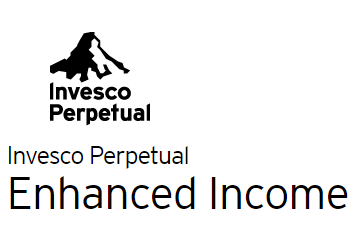Invesco Perpetual Enhanced Income (IPE) has announced its annual results for the year ended 30 September 2018. During the year, IPE achieved what its chairman, Paul Yates, describes as a “a small but positive total return for shareholders”, based on the share price with dividends reinvested, of 0.1%. However, the share price fell from 80.3p at the start of the year to 75.4p at the year end, a decrease of 6.1%. The NAV total return was 0.8% for the year and the NAV per share decreased 5.7% to 73.1p. by way of comparison, the ICE BofAML European Currency High Yield index returned 1.0% and so IPE has mildly underperformed this in both share price and NAV total return terms.
IPE’s Board believes that its shareholders place great value on its consistent dividend stream and the board has prioritised revenue generation through investment in relatively high-yielding and considered debt positions. Market yields remain at historically low levels, which has been a factor in the small but positive total return, but the portfolio managers have managed to generate a net revenue return of 4.6p per share. The dividend was maintained at 5p per share and, in the absence of unforeseen circumstances, the Board’s says that its current intention is that IPE will maintain the annual dividend of not less than 5p per share, paid equally and quarterly.
Portfolio strategy
The portfolio holds a core (around 53%) of non-financial high yield corporate bonds, focused on seasoned issuers that the manager considers have a low likelihood of default. The portfolio also has significant exposure to areas of the market that the manager believes offers relatively attractive yields. 18% of the portfolio is currently invested in bank capital, predominantly in the debt of large European banks. There is also a 11% allocation to subordinated bonds in the insurance sector.
Outside the financial sector, IPE’s largest holdings at a sector level are telecoms, food, utilities and leisure. IPE uses borrowings to enhance the portfolio’s income. As at 30 September 2018, gross borrowing was 18% and net borrowing was 16%.
Manager’s commentary on market backdrop
Despite rising volatility, both European and US high yield bond markets delivered positive total returns over the 12-months to 30 September 2018. European currency high yield bond markets have experienced a relatively controlled repricing over the period under review. The average yield has increased by 56 basis points (bps) to 4.10% after reaching a low of 3.28% in early November 2017. In the US, yields of high yield bonds increased 54bps to 6.53% with a low of 5.9% in October 2017. The premium that issuers in the high yield market need to pay to borrow in euro or sterling over government bonds (the credit spread) has increased by 90 basis points (bps) to 367bps. In the US, the credit spread fell by 28bps to 323bps.
After a positive start to the twelve-month period, concerns about valuation levels and some company specific weakness, led high yield bond markets to come under pressure in November. This also coincided with the ECB’s announcement that the bank would begin to slow and potentially halt its asset purchase programme in 2018. Since then, the market has faced a number of additional headwinds including tensions over global trade, Italian elections, emerging market volatility and the ongoing uncertainty over Brexit.
Amid this backdrop, European currency high yield issuance has fallen from the high levels of supply in 2017. Barclays report that to the 30 September 2018 year-to-date issuance is down 19% on the same period in 2017. However, a strong demand for income at a time of low yields in the European high yield market meant that some issuers were able to price new bonds with very issuer-friendly coupons and bond terms earlier in the year. We approached such deals with a strong sense of caution and, as always, were highly selective. We are pleased that as the year has progressed investors have been able to push back on some of the more aggressive terms favoured by issuers.
Although the repricing of high yield indices to higher yields has appeared relatively controlled, beneath the surface several bonds have experienced sharp price declines. Higher risk companies that have surprised the market, for example with weak earnings, have in some cases seen their bonds drop in price by tens of points. This growing bifurcation in high yield markets is something that we welcome.
Despite the uncertain backdrop we have outlined, default rates within the high yield sector have continued to fall in both US and European high yield bond markets. Many high yield issuers have successfully managed to increase the tenure of their debt at favourable interest rates and, therefore, despite the cost of borrowing now increasing, default rates are forecasted to remain low.
Manager’s commentary on outlook
In recent months we have seen a gradual but relatively small repricing to higher yields in the European high yield bond market. This is a trend that we regard as encouraging for the longer-term outlook. Where appropriate we have sought to and will continue to seek to exploit valuation opportunities that arise as a result. However, with the market continuing to face headwinds, there is the potential for further increase in yields from a relatively low base and we therefore remain cautious. Furthermore, the ECB is now highly likely to scale back the asset purchase programme which had proven to be so supportive for high yield bond markets.
That said, fundamentals within the sector generally remain good. Leverage has increased, but interest coverage ratios are at multi-year highs. Although we have seen some slowing of global growth it remains, for now, broadly supportive. Finally, while there has been some slowing of issuance this year, this follows the very high levels of issuance in 2017. Overall the primary market remains active and most companies are still able to refinance when necessary.
